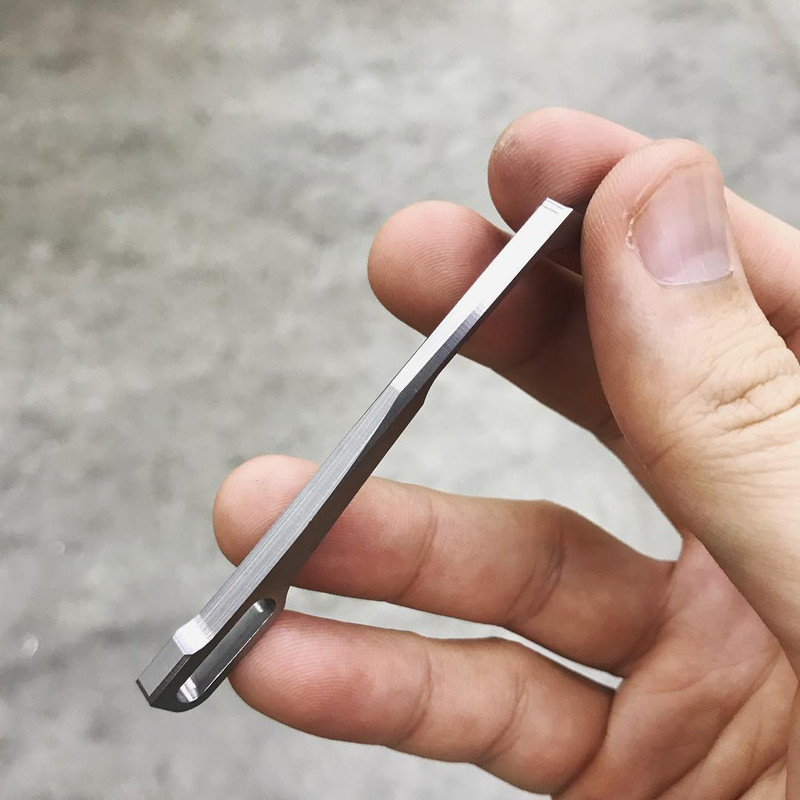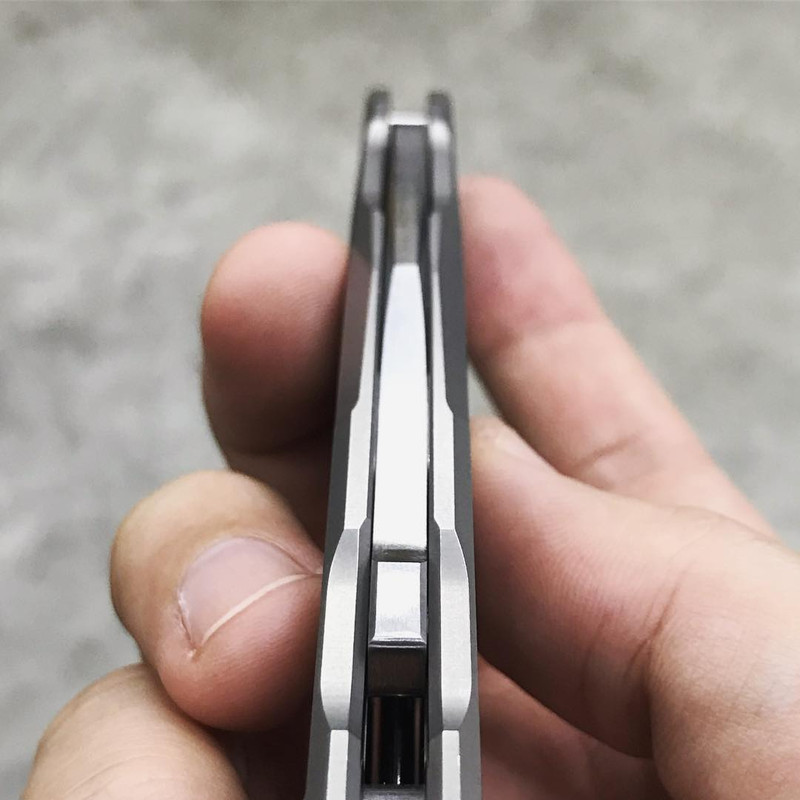unwisefool
Gold Member
- Joined
- Jan 22, 2007
- Messages
- 10,038
Looks interesting, I'll keep an eye out for updates
The BladeForums.com 2024 Traditional Knife is available! Price is $250 ea (shipped within CONUS).
Order here: https://www.bladeforums.com/help/2024-traditional/
I'd like to see it , too ! But if Cold Steel does the test , the results will be deemed meaningless . And nobody else will ever do such a test , probably .Interesting...I know the triad lock lays claim to being the “strongest” blah blah (and maybe it is)...I would really like to see a head to head comparison between a triad and a Spyderco caged ball bearing lock, I have heard that’s actually the strongest lock Spyderco makes (in the manix 2)
Ugh why CRKT, why?
Additional information released today. He's dubbed it the "Superlock."
Activation video:
Some notes from the comment thread:
- The lock is only one of "several" innovations that will be introduced with the new knife but he considers the new lock the "foundation." Shown here is "an early proto of the lock."
- It’s really similar to a lot of other locks by design because he wanted the positive traits of those locks. So it is based on a tab in the backspacer wedging between the blade tang and stop pin like a Bolt Lock but it’s more like the Tri-Ad lock in load transfer, a geometry closer to Compression Lock, with a motion like the CBBL/Axis Lock. The first thing he wanted to do is follow the same principle as Tri-Ad as he believes that’s the only way he could have a chance of matching that lock in strength.
- The lock disengages by pulling the backspacer back longitudinally but as you pull it back it ramps naturally outward/laterally. If you impede this outward motion with your grip, which is the natural placement of the knife in hand, the backspacer can't move backwards. Therefore, gripping the knife harder adds extra resistance to accidental disengagement.
- By design, the spring is not a load-bearing component. You can completely service the spring without disassembly.
- In early prototypes he implemented a safety-like "anti-shock geometry" to prevent sharp impacts from accidentally unlocking the blade. However it would snag the lock making the unlocking difficult. He dropped it for a more natural unlocking. He has a feeling that the current lock geometry is sufficient to prevent shock-unlocks (whacking) but he can’t really get conclusive results now because at the moment all the impact tests deform the aluminum prototypes instead of causing lock failure
- When the current prototype is pushed to its limit, the blade stays open as the internal lock interfaces seize in place or in the case of spring failure the lock only disengages when grip is removed from the knife, thanks to the positive-grip-force design. This was confirmed with spine whacks on the aluminum prototypes including tests where he removed the spring completely and did the whacks with only grip pressure applied. He may post some of these videos in the future. He won't really know the lock's true attributes until he prototypes it in steel and titanium but he's convinced that it has potential.
- He's hoping this does not need an extra safety as Tri-Ad lock doesn’t need one and he wants to match that performance.
Absolutely. IMO, the holy trinity of lock design is strength, reliability and ease-of-use. I appreciate the Triad, but it has all the same drawbacks as a more traditional lockback and, if not properly tuned, can be a real pain in the...thumb.I'm getting more interested, this sounds promising at the very least. The prototype certainly looks pretty easy to operate and if it's as solid as the Tri-Ad lock and easier to operate that sounds like all win to me.
Me too.I'm getting more interested, this sounds promising at the very least. The prototype certainly looks pretty easy to operate and if it's as solid as the Tri-Ad lock and easier to operate that sounds like all win to me.
You mention reliability. Snecx has made a real big deal out of this issue, talking about spring design and ease of maintenance.Absolutely. IMO, the holy trinity of lock design is strength, reliability and ease-of-use.
snecx speculating on future production partners said:Definitely not Boker. CRKT ain’t so bad is it?
He's gotta be kidding, right?
Right?



Snecx Tan said:Another prototype component is done, this time in steel (annealed K110). Dimensionally it is spot on, the entire process went by without drama and everything came out as programmed.
The finish is far from ideal at this point, but it should improve once I mill everything in final hardness. Regardless, it still requires delicate hand finish to look really good.
In my quest for elegance, I wanted Superlock to have as few components as possible. So I incorporated the entire lock mechanism into the backspacer.
The lock face, detent, unlocking interface and spring, are all contained within this piece. It’s not too different from the elegant locks out there like the lockback and framelock. And it’s exactly the point, new and better but not more complicated.
This is another step forward in the development of Superlock. Hopefully soon I’ll be able to get some data from another lock test.
Based on my initial impression, I already know this will perform a lot better than soft aluminum.
Snecx Tan said:... it can work without tight tolerances, so it is more fault-tolerant. I had fully working prototypes in 3D printed plastic and that’s usually 0.05-0.10mm off.
Snecx Tan said:It’ll be a while, but who knows where this will lead. Hope to find out more with my next few steps.
Interesting...I know the triad lock lays claim to being the “strongest” blah blah (and maybe it is)...I would really like to see a head to head comparison between a triad and a Spyderco caged ball bearing lock, I have heard that’s actually the strongest lock Spyderco makes (in the manix 2)
